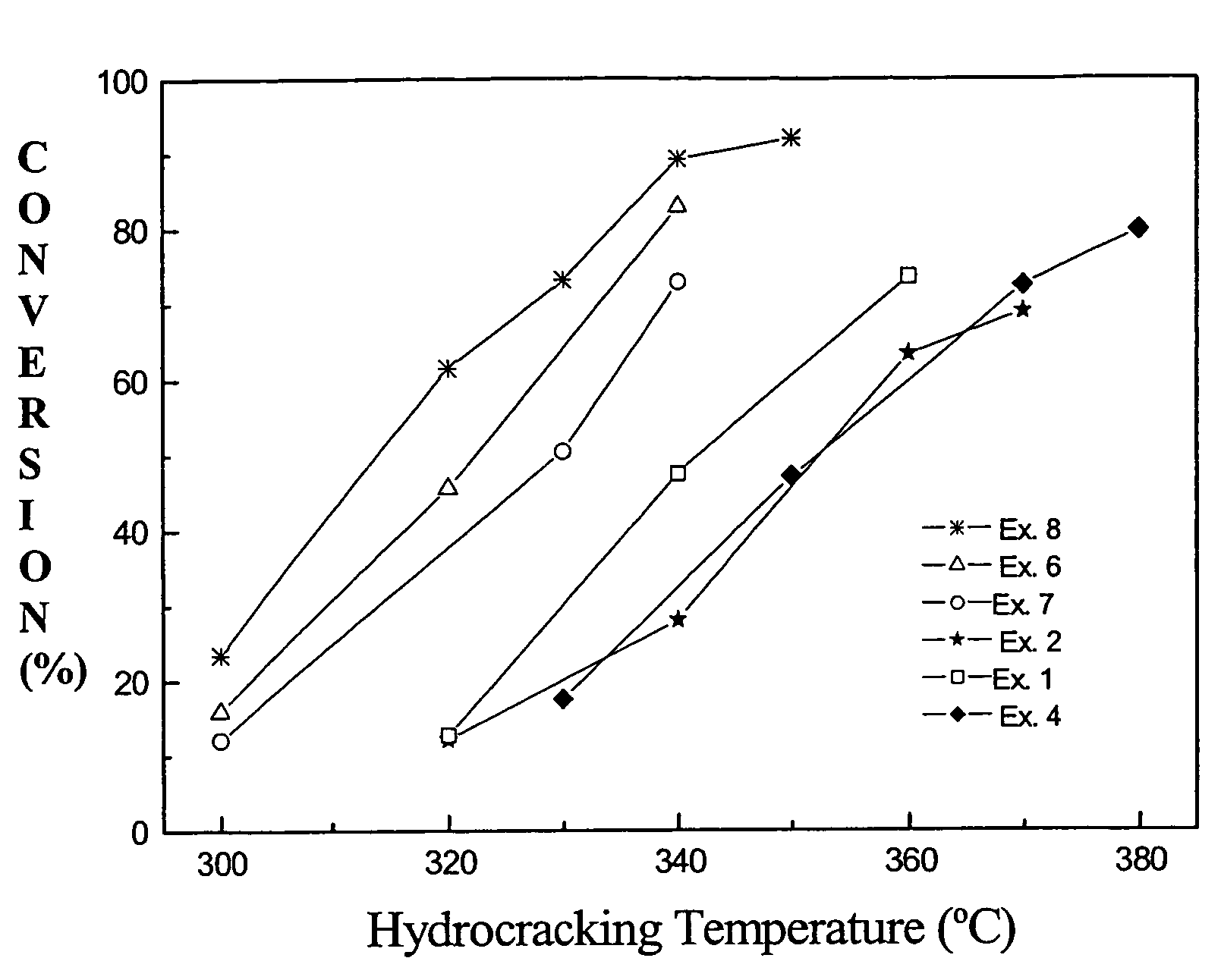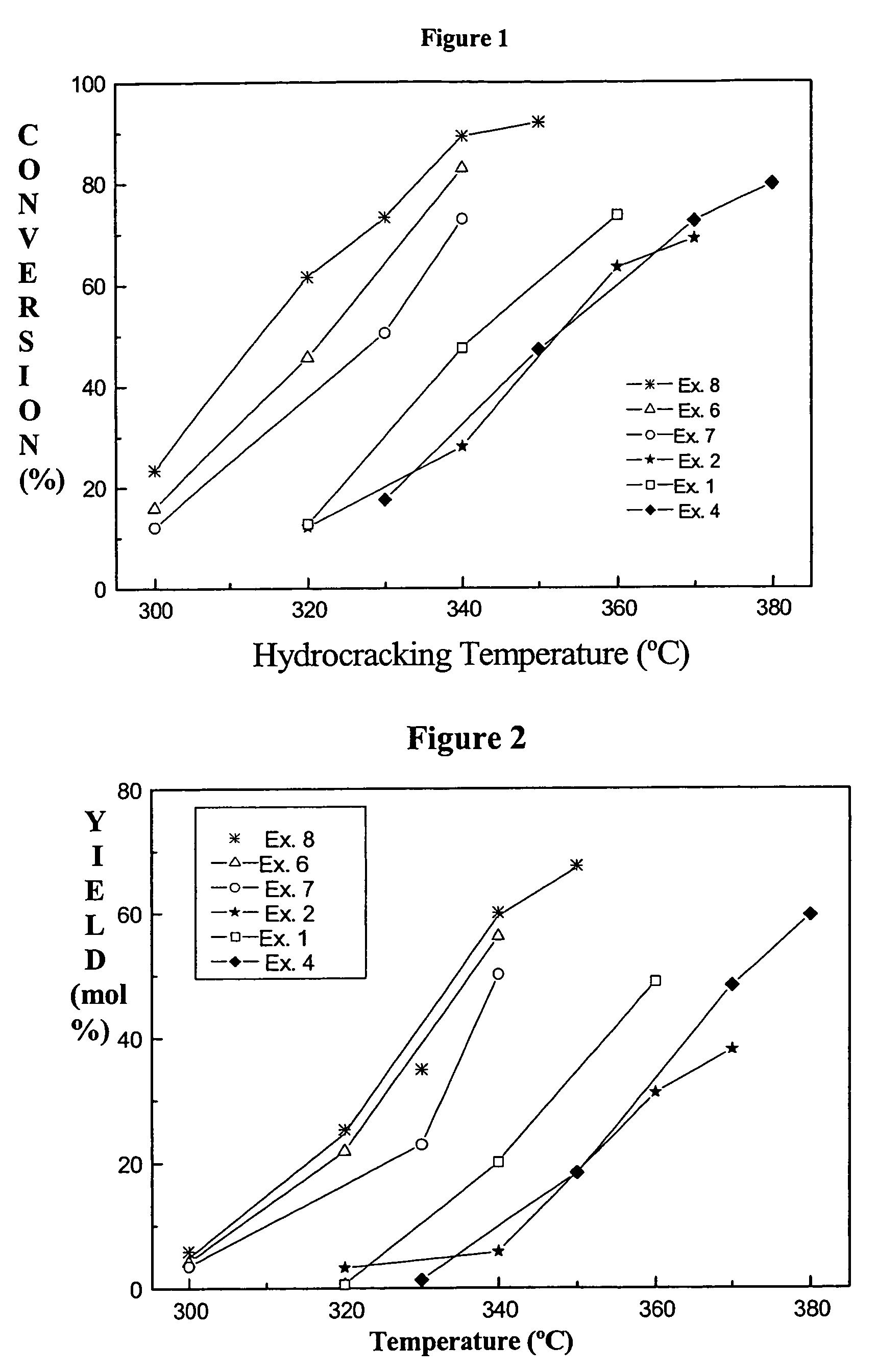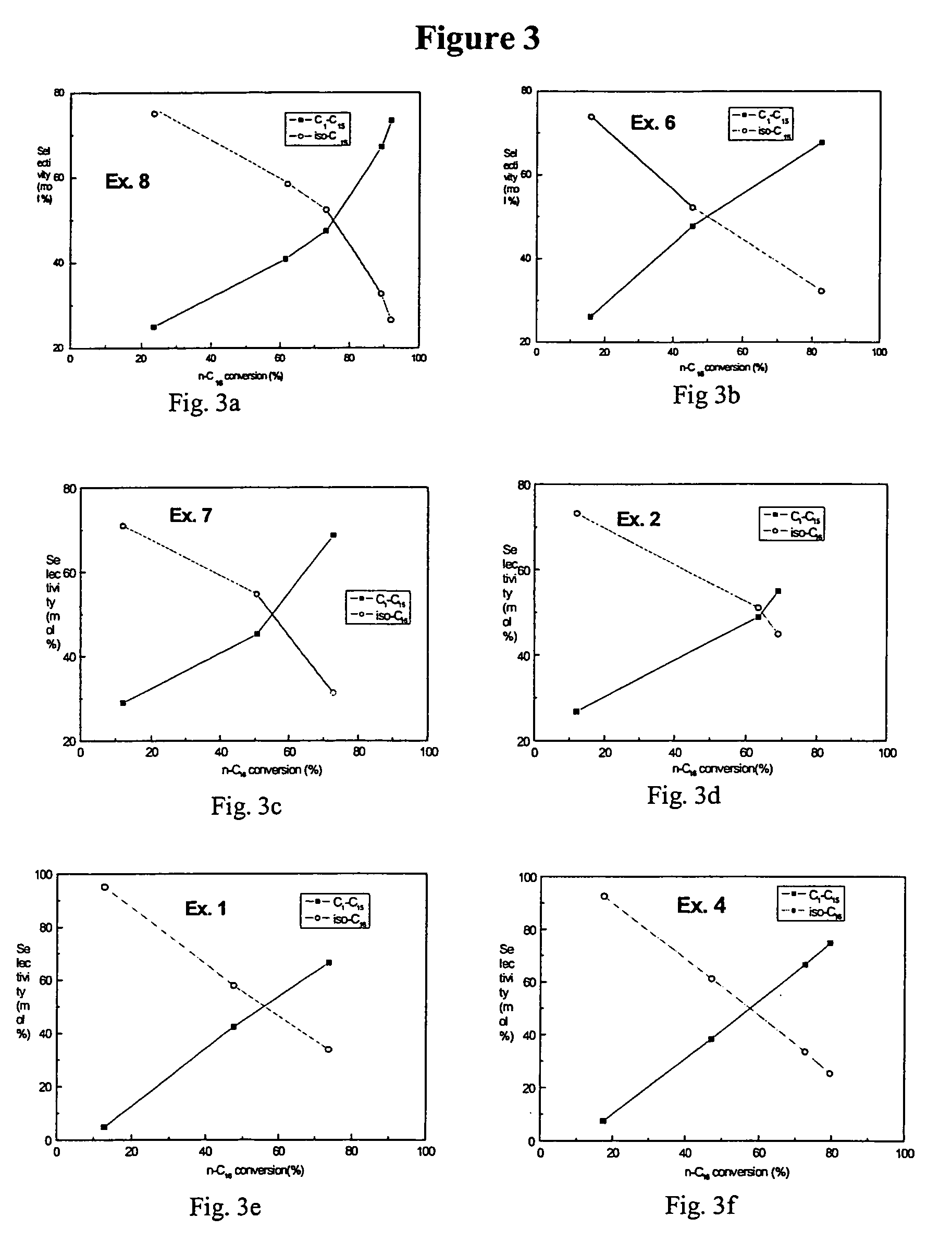Combination of amorphous materials for hydrocracking catalysts
a hydrocracking catalyst and amorphous material technology, applied in the field of acidic amorphous materials, can solve the problems of decreasing the natural source of crude oil used for liquid fuels such as gasoline and middle distillates, presenting technological challenges in transportation, and contributing to the final cost of natural gas
- Summary
- Abstract
- Description
- Claims
- Application Information
AI Technical Summary
Benefits of technology
Problems solved by technology
Method used
Image
Examples
example 1
Catalyst Based on a Low-Acidity Silica-Alumina Material
[0097]A low-acidity silica / alumina support with a molar ratio of silica-to-alumina of 30:1 was prepared by co-precipitating sodium aluminate and sodium silicate with the addition of diluted nitric acid. A hydrogel was obtained within 30 minutes. The gel was then aged for three days at room temperature. Thereafter, an ion exchange step was performed with a 1.0 molar ammonium nitrate solution to convert it from the Na+ to H+ form. Next, the hydrogel was washed with water to remove most of the ammonium nitrate. Finally, the gel was dried at 110° C. overnight and calcined in air at 550° C. for three hours. The resulting sample was then crushed and sieved to obtain particles of a suitable size (about 1 to 2 mm). Using this particulate support, the ion-exchange of platinum (0.3% Pt / SiO2−Al2O3) was carried out by adding the above support to the (NH3)4Pt(NO3)2 solution. Finally, the catalyst precursor (Pt ion-exchanged support) was wash...
example 2
Catalyst Based on a Low-Acidity Silica-Alumina Material
[0098]Another low-acidity silica / alumina material with a molar ratio of silica-to-alumina of 40:1 and catalyst Example 2 (0.3% Pt / SiO2Al2O3) made therefrom were prepared by the same procedure as described for Example 1. The properties of the catalyst Example 2 are shown in Table 1.
example 3
Catalyst Based on a Low-Acidity Silica-Alumina Material
[0099]Another low-acidity silica / alumina material with a molar ratio of silica-to-alumina of 40:1 and catalyst Example 3 (0.3% Pt / SiO2Al2O3) made therefrom were prepared by the same procedure as described for Example 1 except that the platinum compound [(NH3)4Pt(NO3)2] was deposited by incipient wetness impregnation, instead of ion exchange. The properties of the catalyst Example 3 are shown in Table 1.
PUM
| Property | Measurement | Unit |
|---|---|---|
| temperature | aaaaa | aaaaa |
| temperature | aaaaa | aaaaa |
| pore size | aaaaa | aaaaa |
Abstract
Description
Claims
Application Information
 Login to View More
Login to View More - R&D
- Intellectual Property
- Life Sciences
- Materials
- Tech Scout
- Unparalleled Data Quality
- Higher Quality Content
- 60% Fewer Hallucinations
Browse by: Latest US Patents, China's latest patents, Technical Efficacy Thesaurus, Application Domain, Technology Topic, Popular Technical Reports.
© 2025 PatSnap. All rights reserved.Legal|Privacy policy|Modern Slavery Act Transparency Statement|Sitemap|About US| Contact US: help@patsnap.com



